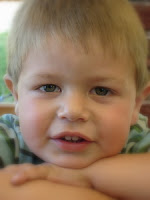Let me share with you one lesson from the brand new Serbian Phrases course I've been working on. As you can see from the table of contents, it covers a lot of phrases used in various situations:
Serbian Phrases - Table of Contents
Situations in Serbian
- General phrases
- Greetings - Saying hello and goodbye
- Talking about the Weather
- Thank you phrases
- Numbers and Telling the time
- Talking about family
- Asking for directions
- Giving directions
- At the bank
- At the supermarket
- At the market
- At the chemist's
- At the hotel
- At the restaurant
- At the café or bar
- At the post office
- At the travel agency
- At the doctor's
- At the dentist's
- At the museum
- At the customs
- Shopping for clothes
- Renting a car
- Travelling by taxi
- Travelling by bus
- Travelling by plane
- Travelling by train
Serbian phrases - Vocabulary
The list of the most frequently used phrases:
- da - yes
- ne - no
- kako se kaže - how do you say
- znači - means
- šta znači "pica"? - what does "pizza" mean?
- hamburger znači "hamburger" - hamburger means "hamburger"
- ne razumem - I don't understand
- ne znam - I don't know
- znam - I know
- razumem - I understand
- levo - left
- desno - right
- baš - really
- nema problema - no problem
General phrases in Serbian - Game
General phrases in Serbian - Exercises
General phrases in Serbian - Printable tests
Now, you can download the following PDF files to practice these words:
Uživajte igrajući igrice i učeći srpski :)

.png)



























